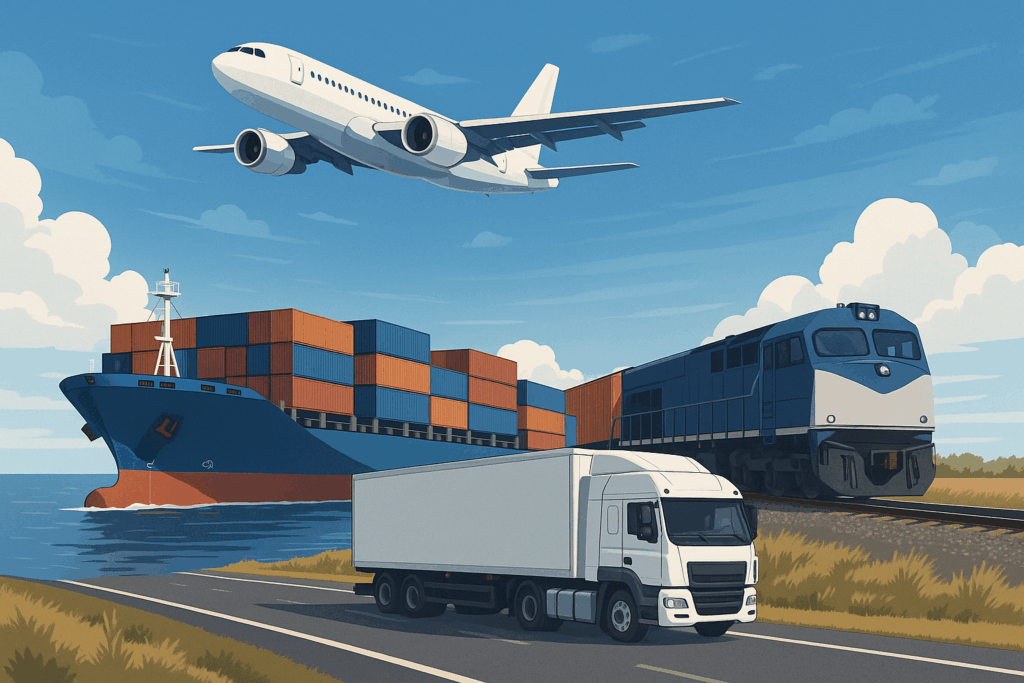In global trade, one small document can determine whether your cargo clears customs smoothly or faces costly delays. That document is the Shipper’s Letter of Instruction (SLI). If you’ve asked yourself, “what is SLI in shipping?”, this guide explains its definition, usage, connection to freight forwarding, and why it is a vital step for exporters and logistics companies.
What is SLI in Shipping?
SLI stands for Shipper’s Letter of Instruction — a formal document an exporter sends to a freight forwarder or carrier. It contains detailed shipment instructions, including:
- Shipper and consignee details
- Cargo description and HS codes
- Shipping method (sea, air, rail, multimodal)
- Incoterms (e.g., FOB, CIF, EXW)
- Special handling requirements (e.g., temperature control)
- Export compliance declarations
The SLI acts as a bridge between the seller and the forwarder, ensuring that the cargo is booked, documented, and shipped exactly as intended.
Where is SLI Used?
The SLI applies across multiple transportation modes:
| Mode of Transport | Role of SLI | Example in Action |
|---|---|---|
| Sea Freight | Guides Bill of Lading creation and loading sequence | Exporter from China to USA providing port of loading, vessel schedule |
| Air Freight | Ensures Air Waybill accuracy and handling | Urgent shipment from Germany to Japan requiring “fragile” marking |
| Rail Freight | Confirms routing and container type | European land bridge shipment from Poland to China |
| Multimodal | Coordinates between transport stages | Electronics shipment moving truck → rail → ocean |

Relationship Between SLI and Freight Forwarding
When discussing what is SLI in shipping, you can’t ignore its link to freight forwarding:
- Authority – Authorizes the freight forwarder to act on the shipper’s behalf for booking, documentation, and customs clearance.
- Accuracy – Forwarders rely on SLI to prepare Bills of Lading, Air Waybills, and export declarations without errors.
- Compliance – The SLI ensures export controls and trade regulations are followed, reducing the risk of fines or cargo seizure.
For example, in an ocean freight scenario from the US to Singapore, the forwarder will use SLI data to ensure the Harmonized System (HS) codes match the commercial invoice, preventing customs disputes.
Get a customized SLI and shipping plan today — contact our logistics team for a free quote within 24 hours.
Why Use SLI in Shipping?
Using an SLI brings measurable benefits:
- Prevents Miscommunication – All instructions are clear and documented.
- Ensures Regulatory Compliance – Meets customs and export law requirements.
- Avoids Shipping Errors – Prevents wrong routing or incorrect cargo details.
- Protects Against Liability – Acts as written proof of instructions.
- Speeds Up Documentation – Forwarders can prepare shipping paperwork faster.
Step-by-Step SLI Process Flow
Here’s how SLI fits into the shipping process:
- Exporter Creates SLI – Filling in cargo, consignee, and compliance details.
- Forwarder Reviews – Checks for missing or conflicting information.
- Cargo Booking – Forwarder secures vessel, flight, or rail space.
- Document Preparation – Bill of Lading or Air Waybill created using SLI data.
- Customs Clearance – Export declaration submitted per SLI instructions.
- Cargo Departure – Shipment follows the route and conditions stated.
Example: SLI in a Real Shipping Scenario
Imagine a Chinese textile manufacturer exporting garments to Canada:
- Step 1: The exporter completes the SLI with consignee address, HS code 6109 for cotton T-shirts, and FOB Shanghai Incoterms.
- Step 2: The freight forwarder uses SLI to book a container vessel, prepare the Bill of Lading, and declare export goods to Chinese customs.
- Step 3: Upon arrival in Vancouver, the consignee receives goods as instructed, avoiding delays or disputes.
Common Mistakes to Avoid with SLI
- Omitting HS codes – Can lead to customs rejection.
- Incorrect consignee address – Causes delivery delays.
- Missing special handling notes – Risk of damaged goods (e.g., refrigerated cargo).
- Using outdated Incoterms – Creates confusion in cost and responsibility.

Why SLI is Important in 2025
With stricter customs controls, digital trade documentation, and growing global freight volumes, SLI is now more critical than ever. Many forwarders require it before accepting shipments, especially for high-value goods, dangerous goods, and shipments involving multiple carriers.
Conclusion
Understanding what is SLI in shipping is essential for anyone involved in global trade. The Shipper’s Letter of Instruction is more than just a form — it is a strategic tool that ensures your cargo moves smoothly, your documents remain accurate, and your shipment stays compliant with international regulations.
By clearly outlining shipping instructions, authorizing your freight forwarder, and preventing costly errors, the SLI helps exporters maintain control over the logistics process from origin to destination. In today’s competitive and regulation-heavy shipping environment, using an SLI is not just a best practice — it’s a safeguard for your business success.
Request a Quote
Need a tailored solution for your shipping from China?
Let TJ China Freight Forwarder assist you with reliable, cost-effective service.
FAQ:
Q1.Is SLI mandatory for domestic shipping?
No, it’s primarily used for international shipments.
Q2.Who is responsible for preparing the SLI?
Usually, the exporter creates and sends it to the freight forwarder.
Q3.Can an SLI be electronic?
Yes, many forwarders accept digital SLI forms to speed up processing.
Q4.How is SLI different from a Bill of Lading?
SLI gives instructions; a Bill of Lading is the actual contract of carriage.
Q5.Does SLI apply to dangerous goods?
Yes — and it must include additional hazardous material handling details.
